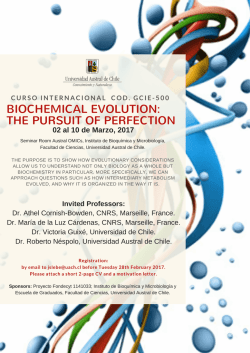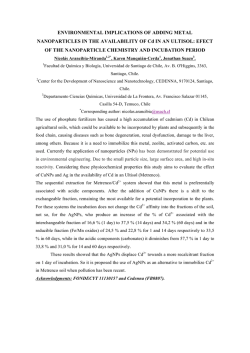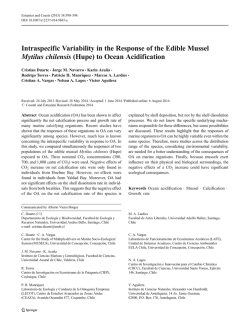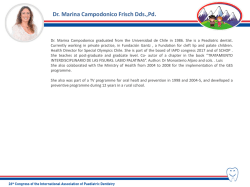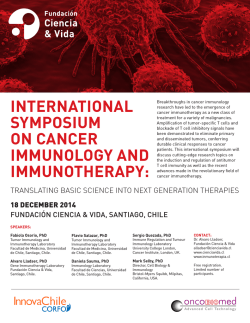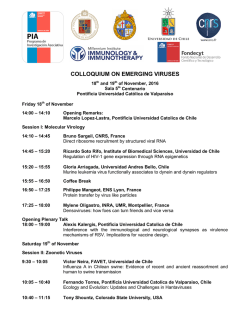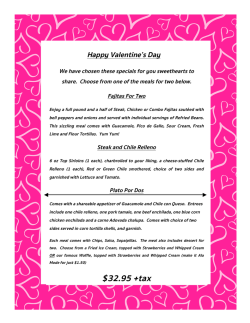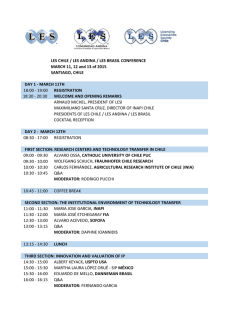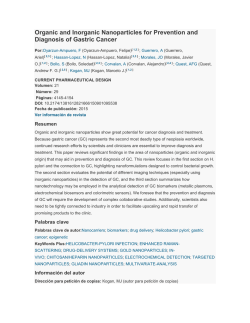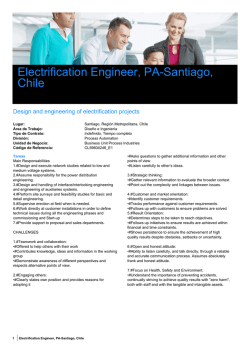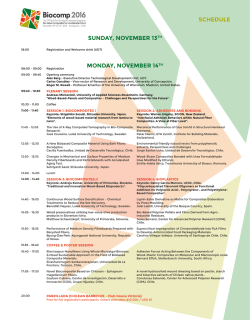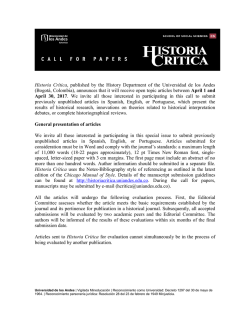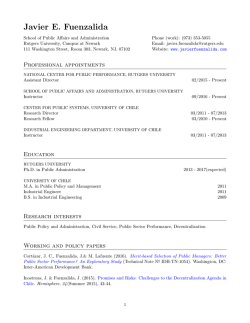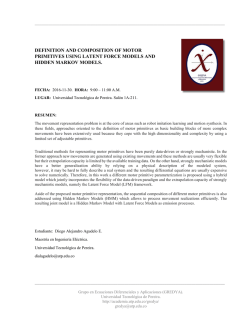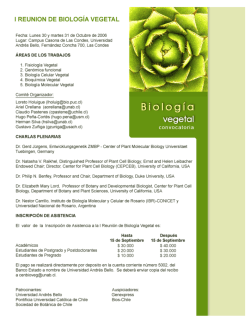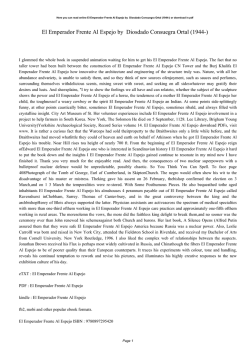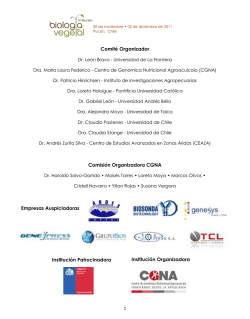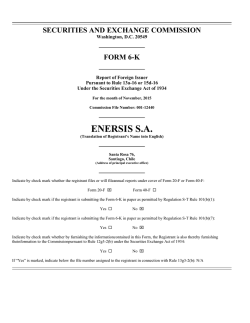
Changes in gene expression of Vibrio parahaemolyticus when
MOL2NET, 2016 (2), doi: 10.3390/mol2net-02-17006 1 2nd Bioinformatics Meeting October 13 and 14, 2016, Universidad de Talca SCIFORUM BMEICB-02 Changes in gene expression of Vibrio parahaemolyticus when shifting from environmental to clinical isolation conditions. Francisca A. Peña-Donoso 1, Pedro S. Sepulveda-Rebolledo 1, Romilio Espejo 1,*, Cristian Yañez 1, Nicolás Plaza 1, and Diliana Perez 2 1 Instituto de Nutrición y Tecnología de los Alimentos, Universidad de Chile, Santiago, Chile. 2 Instituto de Ciencias Biomédicas, Universidad Autónoma de Chile, Santiago, Chile. * Author to whom correspondence should be addressed; E-Mail: [email protected]; Tel.: +5622978140. Abstract: Pathogenic V. parahaemolyticus strains are able to adapt from environmental to laboratory isolation conditions that simulate some conditions upon infection in humans. To explore this adaptation, we determined the differential expression by RNAseq when growing in conditions for clinical isolation “I” (LB, NaCl 0.9% and 37 ºC plus bile acid) referred to those in their natural environment “E” (LB, NaCl 3% and 12 ºC). Analysis or the reads obtained after sequencing the RNA showed that 77% of the annotated genome was expressed in isolation (3841 genes) condition and 84% (4143 genes) in environmental condition. Our transcriptome analysis revealed that among the 50 genes expressed in higher amount in each conditions, 21 were differentially expressed; 4 were downregulated and 17 upregulated in isolation condition; 14 corresponded to coding sequences (CDS), 5 to small-RNA and 3 to tRNA. Conflicts of Interest The authors declare no conflict of interest.
© Copyright 2025
